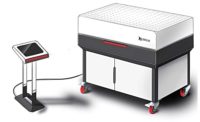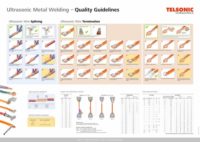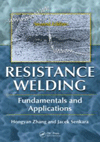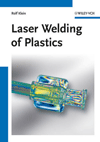In the continuing evolution within the family of ultrasonic welding and complementary expanding of appliance needs, ultrasonic metal welding as a solution encompasses superior performance, improved throughput and reduced maintenance. Such clean, fast and cost-effective systems produce highly stable, better quality bonds able to stand up to harsh environmental conditions while meeting those current and future demands of appliance designers and engineers.
For manufacturers of appliances, refrigeration and HVAC equipment, ultrasonic metal welding has multiple uses. Among some typical appliance applications:
- Heat exchanger systems
- Compressors
- Harnesses
- Resistive thermal devices
Among drivers of ultrasonic metal welding:
- The technology is inherently eco-friendly.
- It’s a highly energy efficient process, with less than 1/30th of the energy of resistance welding.
- It eliminates the need for added materials or contaminants such as flux agents, solder, solvents or crimp connectors.
Here are four system approaches that have, to one degree or another, applications in appliance design leading to final product manufacturing.
- Spot welding
- Metal seam welding
- Metal splicing
- Metal sealing
Let’s take a closer look at these.
Spot welding systems are extremely robust machines that can handle a range of non-ferrous welding apps including precise welding of smaller gauge metals and delicate assemblies. These systems are also particularly well suited for automation to maximize throughput.
With a choice of actuator configurations, quick-change modular tooling and multi-frequency operation, some units (one instance, Ultraweld from Branson Ultrasonics) can configure to perform the work of 18 different welders.
Among applications: wind power motor windings, implantable pacemaker capacitors and photovoltaic cells.
Continuous seam welding systems deliver a continuous-feed welding process with no limits to material length or width. Systems are electronically adjustable to enable welding of a range of materials and thicknesses at different operating speeds. These systems (for instance, Ultraseam from Branson Ultrasonics) can handle continuous welding of aluminum and copper foils at speeds up to 22 meters (72 feet) per minute. And welding variables can be precisely monitored and controlled to provide consistent results.
Applications: continuous welding of aluminum and copper foils, battery anode/cathode tabbing, continuous tube welding and solar panels.
Ultrasonic splicing systems allow precision splicing of non-ferrous wires in a wide range of sizes, resulting in superior electrical connections as compared to crimping, soldering as well as bottom line savings in power consumption, elimination of consumables and long tool life.
These systems (one example, Ultrasplice from Branson Ultrasonics) employ a retractable anvil and automatic sequencing to produce the full range of required splices and incorporate replaceable tip technology for maximum tool life at minimal cost. The approach can weld through enamel insulated magnet wire as well as disperse surface oxides and contaminants, producing high-quality electrical connections in a single operation.
Among applications: appliance wire harnesses, motor brushes, component assemblies and braid wire tipping.
Ultrasonic metal tube sealer systems hermetically seal copper and aluminum tubes. A one-step operation crimps, seals and cuts off charged tubes in under one second. Systems are suited to automation for high levels of efficiency and productivity.
Some sealer systems (Ultraseal from Branson Ultrasonics, for example) are specifically designed for explosive environments and can seal copper tubes up to 12mm in diameter. Precise controls lead to consistent seals, not operator dependent, unlike alternative brazing processes.
Among applications: sealing charged tubes used in refrigerators, air conditioners and bulb temperature sensors.
Appliance designers and engineers also know of continuing advances in metals technology, often leading to thinner and lighter metal foils and wire. Ultrasonic metal welding can satisfy the clean and delicate requirements of these current and emerging applications as compared to traditional welding methods, which may be too destructive.
In addition, picking the right ultrasonic metal welding source can be a “force multiplier” when that source has the ability and expertise to help advise the design chain through all stages of a project: consultation, design, material feasibility, prototype development, product testing and final production. This also covers working with integrators and appliance manufacturers with the goal of equipment installed seamlessly and integrated into automated systems.





